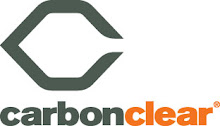(This article originally appeared on the 2DegreesNetwork website.)
What's more, you're often asked to hit a moving target. Initiatives that seemed cutting edge five years ago are standard practice today. In another five years they'll be considered woefully insufficient.
Take carbon footprinting as an example. In 2007, when Marks and Spencer announced their Plan A initiative, a handful of leading companies measured greenhouse gas (GHG) emissions from their office energy use, plant and equipment, and vehicles. If they looked at their Scope 3 emissions at all, the focus tended to be limited to business travel. By 2012, many publicly listed companies reported their carbon footprint, and the leaders were incorporating their supply chain, customer and product lifecycle emissions into the total. In that same year, CDP announced that they would henceforth give even greater weight to Scope 3 supply chain reporting in their investor questionnaire. Those former leaders that "only" report Scope 1 and 2 emissions would soon find themselves at the bottom of the pile.
We see this progression in the rise of "net positive" initiatives from the likes of Coca-Cola, Kingfisher, Rio Tinto, Ikea and BT. There is something of a sustainability arms race underway. It used to be enough to report on your environmental impact. Then companies began to report about how effectively they were minimizing their impact. But to be a leader today, your targets require you to leave the environment better than when you started.
You can also see this evolution in Carbon Clear's annual FTSE 100 carbon maturity rankings. In order to differentiate between leaders and laggards, each year we have had to take an increasingly nuanced view of companies' approaches to climate change. To take just one area of focus as an example: Does your company measure and report its GHG footprint? Of course it does. Does it follow ISO 14064-1 or the GHG Protocol? Absolutely. Does it include Scope 1, 2, and material Scope 3 emissions? Probably. Does it seek third party assurance? Er, maybe.
Offsetting is a consideration in our carbon maturity rankings, and a little nuance goes a long way here as well. Does your company use carbon offsetting to achieve cost-effective net reductions? Most likely, yes. Are you fully carbon-neutral for at least Scope 1 and 2, or for your corporate travel? Possibly. Have you declared carbon neutrality against the BSI PAS-2060 specification and gotten third-party assurance for your claim? If you're in the FTSE100 and you’re not M&S, probably not.
And so on. This continuously evolving methodology makes it more challenging to perform time-series comparisons that track a company's movement up the Carbon Clear rankings. Without this evolution, however, most companies would end up bunched together. With little to distinguish one firm from another, the rankings would get less useful over time.
Assessing how well companies report their sustainability will remain an evolutionary process just as the actual act of reporting also develops. Neither reducing carbon emissions nor making your business more sustainable are end goals in themselves. There is always more to be done and it’s all about the journey.
In November Carbon Clear will be holding a webinar on 'Carbon reporting schemes: Minimize the pain and maximize the benefits', which will explore the different reporting schemes, how they fit together and how to effectively manage your data to minimize your workload. Find out more and register.



